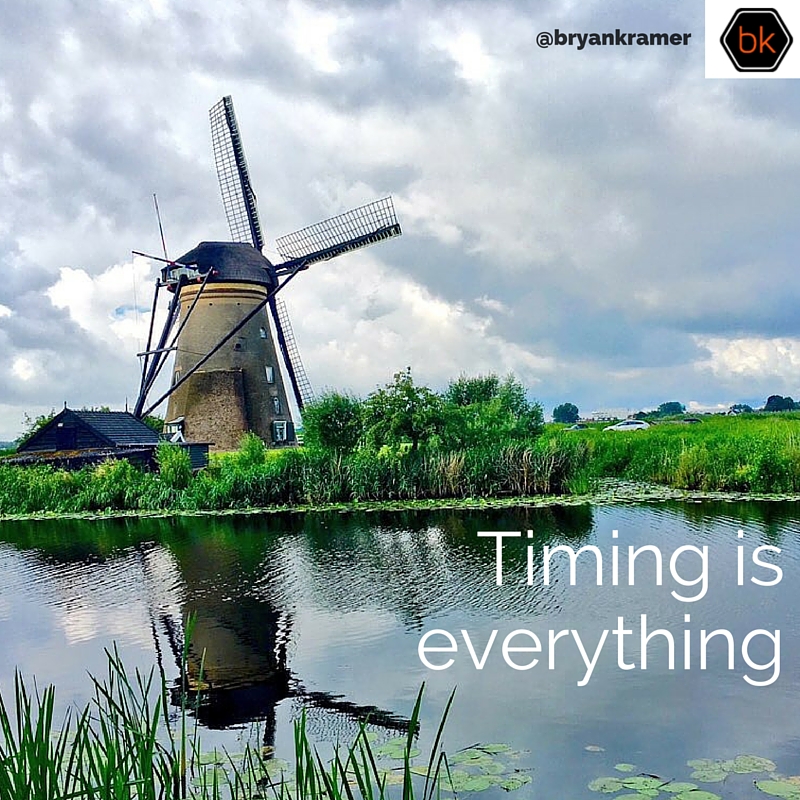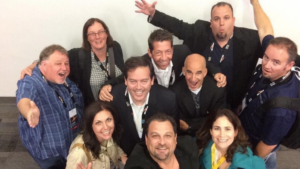It’s critical that we all practice timing when and what we share. Knowing when to say (or not to say) something can make a huge difference in our relationships. How many times during a conversation have you thought, Gee, I wish I had known this earlier? … or Wow, what were they thinking? Not the best time or place to share that … timing is everything. The best communicators know how to time what they say to coincide with when their audience is most receptive, whether that’s in online or offline conversations. There’s no difference.
Test When You Share
So when is the perfect time to share content with your audience? You can end the answer by testing your posts to see what resonates and when. Here again, the science of listening is helpful and can change your results dramatically. For example, I used to set my tweets to release between 6 a.m. and 10 p.m., which led to what I considered good engagement.
But when I analyzed all my Twitter follower activity, I found out that I was missing engagement from 1 a.m. to 4 a.m., which correlated to when my European audience was sharing. So I tweaked my schedule to release tweets between those hours. When I ran the report again two weeks later, the results were o the charts!
Over half of my Twitter audience hailed from European time zones, and the engagement during that 1 to 4 a.m. slot was double what I received during the day.
I also found that Saturday was a slow day for my audience; most are too busy elsewhere to engage on Twitter with what I share. So I adjusted my tweets to release across all time zones every day except Saturday, and now I get much better results.
Audiences vary, so you’ll have to do your own testing, but you can see how important it is to make it a part of your sharing strategy and you should take advantage of that window of time for further engagement.
However, keep in mind that the window is likely to be short and attention will wane over time, so frequency is another thing to test.
[Tweet “When something resonates, that means people are listening via @bryankramer”]
Knowing When Not to Share
ere are also a lot of timing challenges in how much you talk about yourself versus talking about other things. Even if you have good news to share every day about your company, that doesn’t mean you should.
Good news (as well as bad news) should be well timed. Jumping all over something the minute you nd out about it may have negative consequences or reduce the impact of what you’re sharing down the road.
For instance, when I started writing this book, I didn’t share the title or subject right away. It’s a good thing I didn’t, because later, when I received the opportunity to deliver my TED talk, they required that it be about a subject I had not publicly shared.
While there is no way to know that these opportunities are on the horizon, I’ve seen that waiting just a bit before releasing big news can result in better timing karma. Also, when a company or an individual constantly shares good news about themselves it can start to sound more like noise than news.
The TMI Factor: When Does Sharing Become Too Much?
Closely related to knowing when not to share information is knowing what not to share, or the “Too Much Information” (TMI) factor. We have all seen personal Facebook profiles where an individual shares every moment of their lives, from their first bathroom break to what they’re planning for dinner and everything in between. TMI, right?
Whether you’re sharing for personal or business reasons there’s a balance to achieve between sharing style and frequency. Weighing the threshold of posts for each channel with the type of content that will most likely resonate with your audience will help you limit the TMI factor that turns audiences.
A funny (but true) quote by Tucker Carlson sums it up: “Unless you know a lot more about something than I do, I’m not really that interested. I have too much information already.”
Timing: Key Takeaway
A good overall sharing strategy for the right timing is always a blend of planning, finding the right tools, and practicing authentic human engagement. Yes, timing is critical—both saving time and being timely with what and when we share. However, the important thing to remember is that automation should always be tempered by keeping the end goal in mind: building human relationships. Relationships are what move us forward individually and as brands.






